Despite the complicated development of the COVID-19 pandemic, Phu Yen leather and footwear village in Hanoi has not only overcome the common trouble to maintain production, but has also improved production method and invested in technology to reach markets abroad.
During our trip to Phu Yen village, Phu Xuyen district, we visited a workshop specializing in sandal production by Nguyen Thi Nhan’s family. We saw the change of thinking and production method at the workshop. Most manual phases were replaced by modern machines. With 25 official employees, Nhan’s workshop produces 1700-1800 pairs of sandals/day.
The improvement originated from the suggestions and demands of foreign partners. At present, Nhan and her shareholders have invested in a production line of sport shoes. The production line is expected to begin operation in the last quarter of this year with the support of foreign experts.
There are three out of four villages in the commune developing the craft. About 300 households engage in making leather and footwear and 35 households supply material for the whole commune. The craft provides jobs for more than 2,000 employees.
According to Nguyen Dai Hoan, Secretary of the Phu Yen commune party committee, the average income of employees in the workshops is 7-10 million dong (300-450 US dollars)/month. During the COVID-19 pandemic, the workshops strictly implemented measures to prevent and control the virus spread. So far, there have been no cases of COVID-19 in the commune.
The leather and footwear craft village has been around since the French colonial period. As owner of a workshop making boat-like shoes in Hai Phong, Nguyen Luong Mac turned to making shoes. He gave the skill and advice of making shoes to the next generations. The craft has been preserved and continues developing.
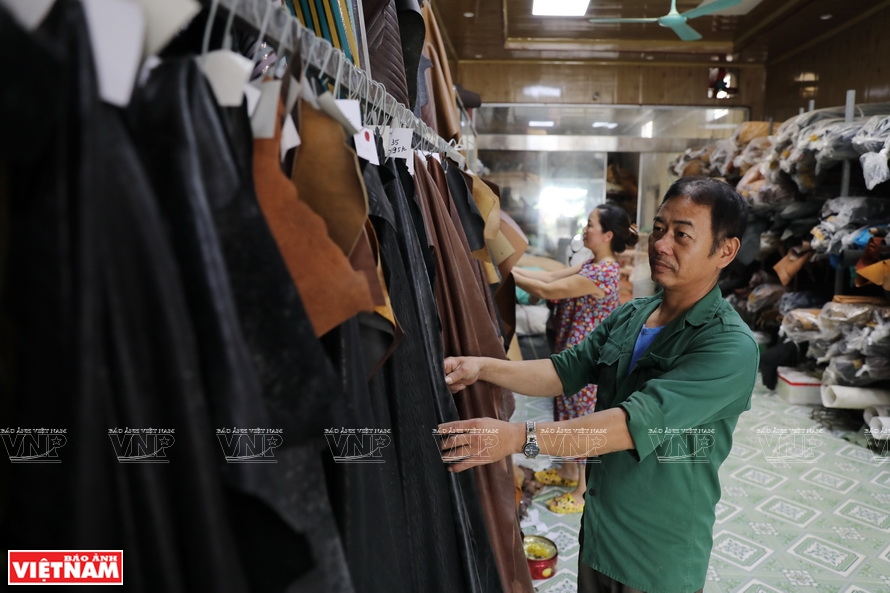 Thanks to active support from local authorities and the Vietnam Leather, Footwear and Handbag Association
Thanks to active support from local authorities and the Vietnam Leather, Footwear and Handbag Association
(LEFASO), many households in Phu Yen have turned to large scale businesses.
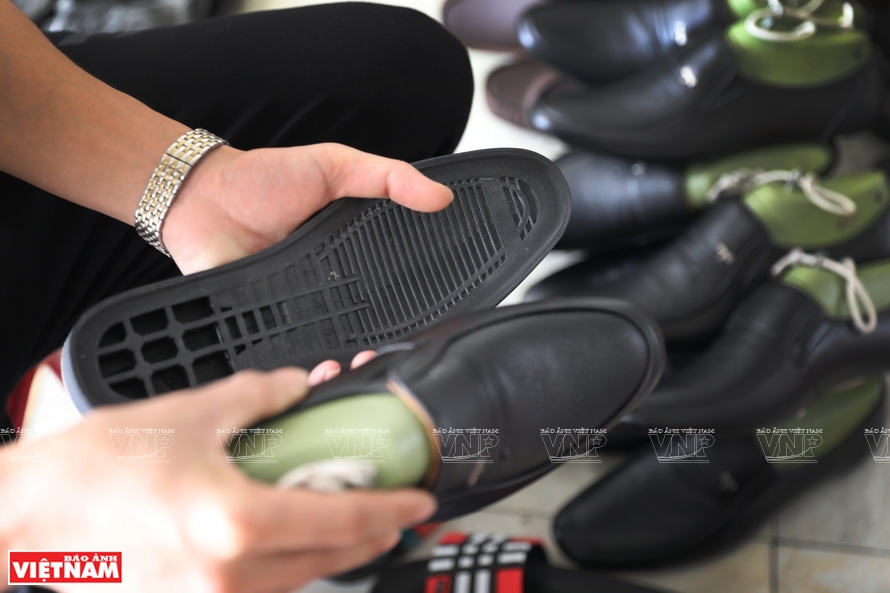
Finishing leather shoes in Phu Xuyen. Photo: Thanh Giang / VNP
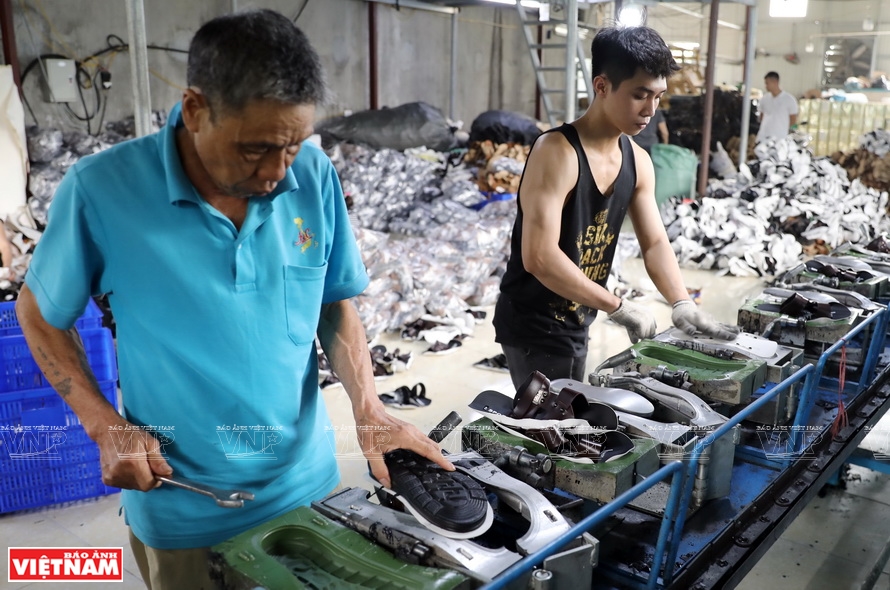 Craft items that used to be made by hand are replaced by machines at Nguyen Thi Nhan’s workshop. Photo: Thanh Giang / VNP
Using a machine to produce sandals in the village. Photo: Thanh Giang / VNP
The craft village lures a lot of employees with stable income.
Craft items that used to be made by hand are replaced by machines at Nguyen Thi Nhan’s workshop. Photo: Thanh Giang / VNP
Using a machine to produce sandals in the village. Photo: Thanh Giang / VNP
The craft village lures a lot of employees with stable income.
|
In 1960, Phu Yen established a cooperative to make and export leather footwear to eastern European countries. After 1986, the craft village had development steps following the Doi moi (Renewal) of the nation. Since 1996, Phu Yen leather and footwear craft village has developed significantly with the production yield of 5-6 million pairs/year. Phu Yen products now appear nationwide as well as in several developing markets of Laos, Cambodia and African countries.
Thanks to the timely and drastic direction of the local authority during the COVID-19 pandemic, the locality has reached dual goals of fighting the pandemic and maintaining production. In 2020, the commune had four products which received the four-star OCOP (one commune - one product program) certificate. The locality plans to submit five products to OCOP in 2021.
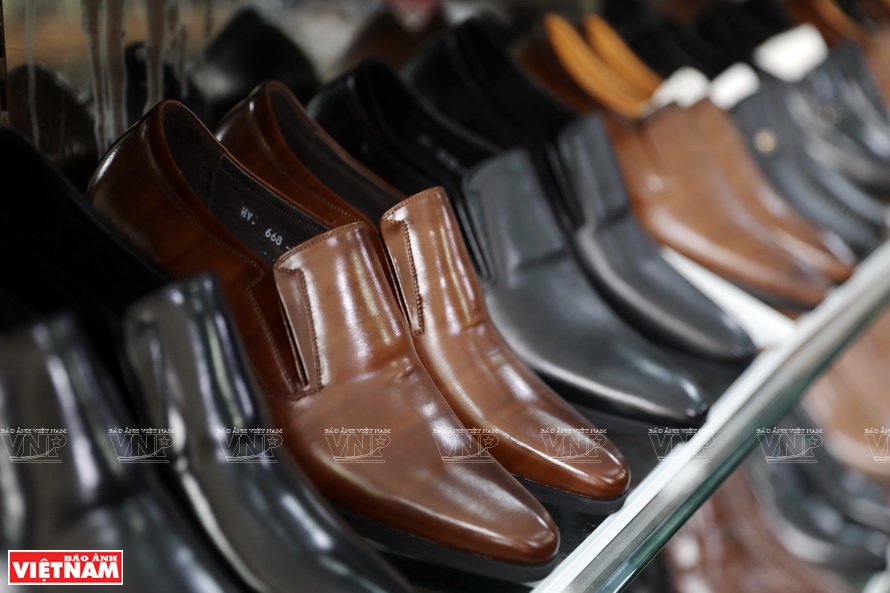
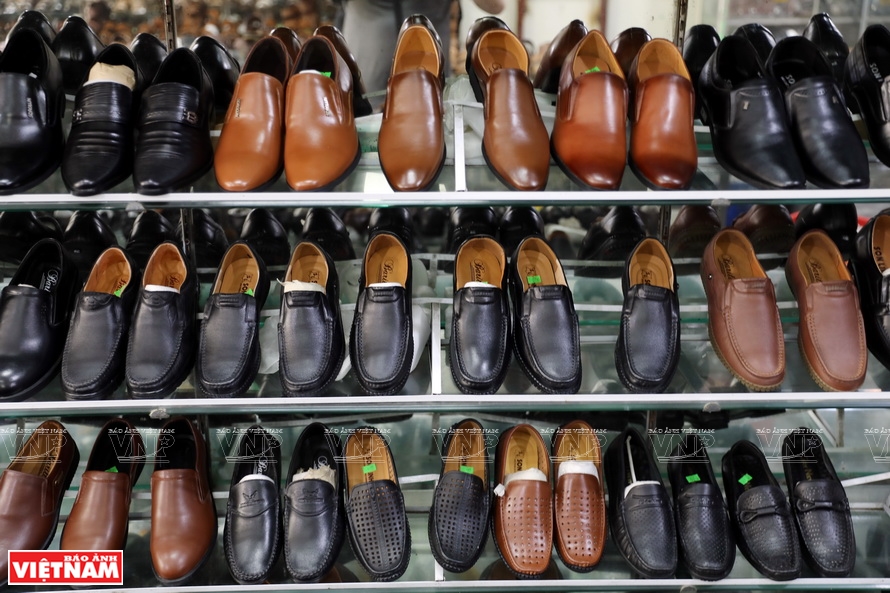
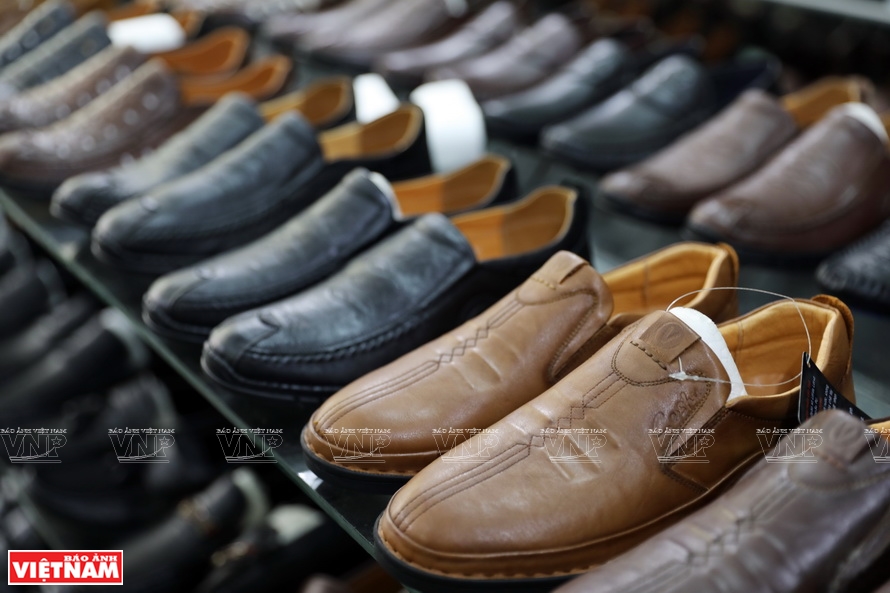
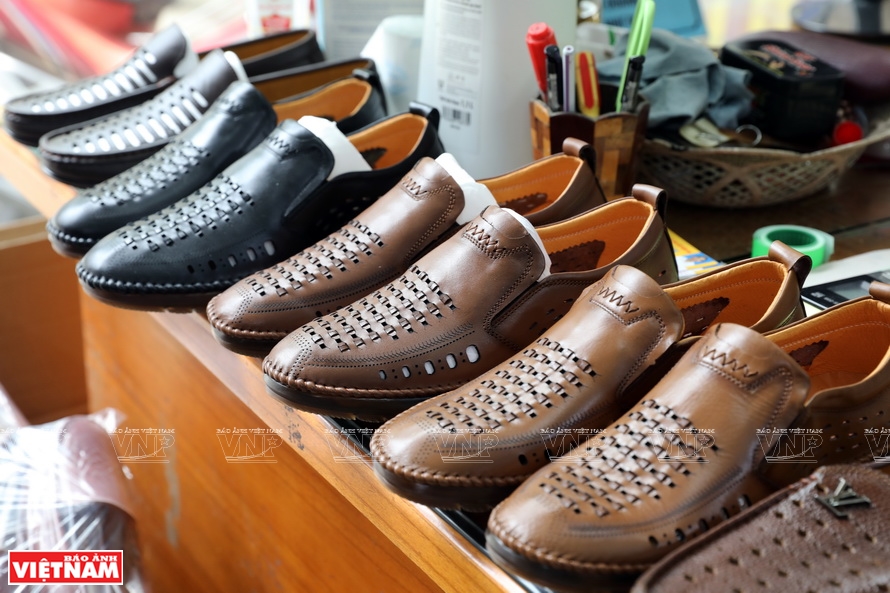 Various footwear products are made from high quality leathers. Photo: Thanh Giang / VNP
Various footwear products are made from high quality leathers. Photo: Thanh Giang / VNP
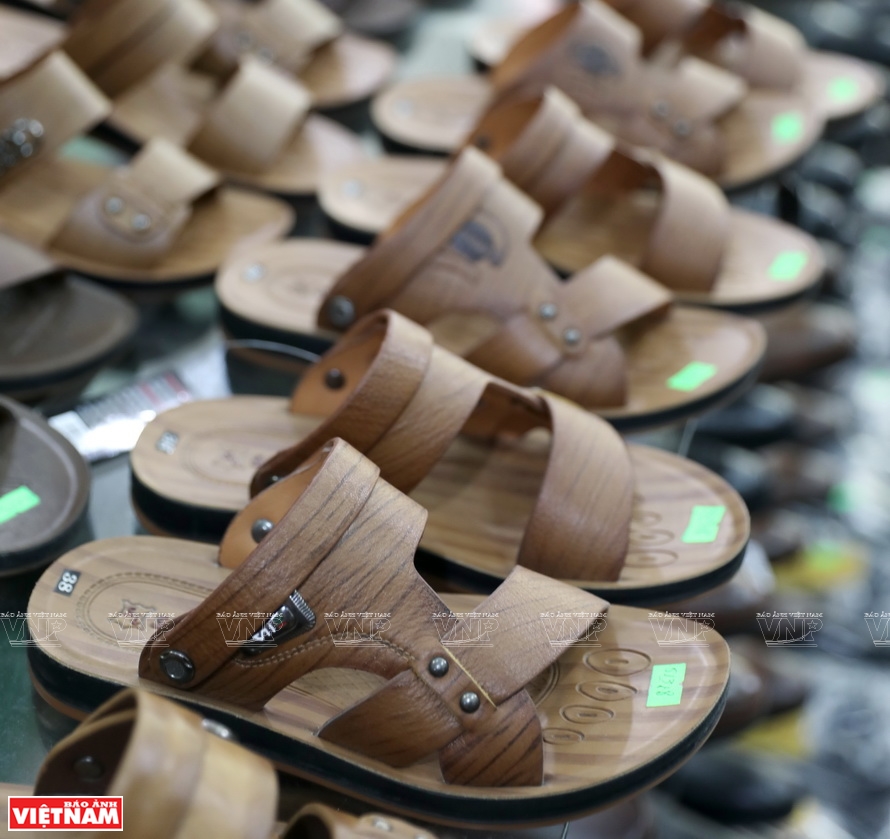 Leather sandals for men, made by Phu Yen villagers.
Leather sandals for men, made by Phu Yen villagers.
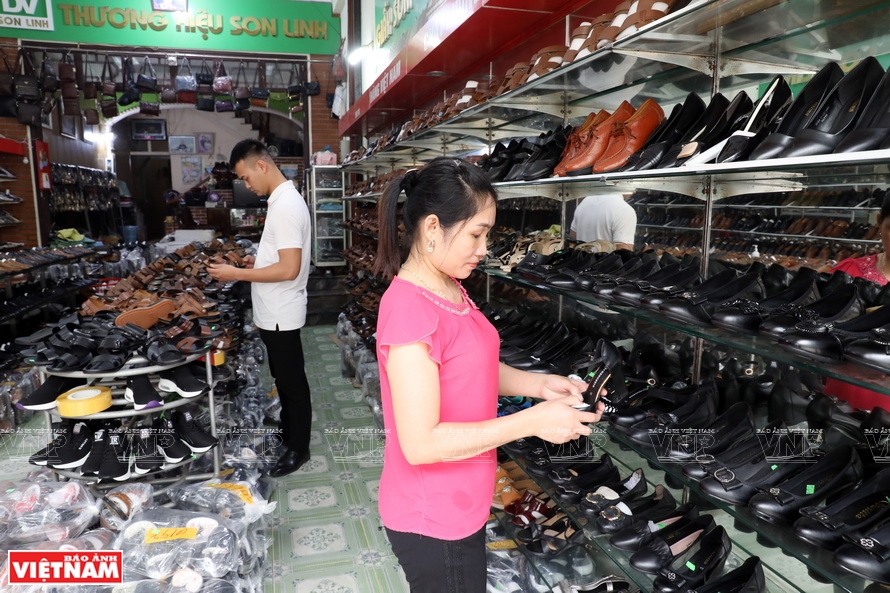 Phu Xuyen’s footwear products have various models and styles for both male and female.
Phu Xuyen’s footwear products have various models and styles for both male and female.
Photo: Thanh Giang / VNP
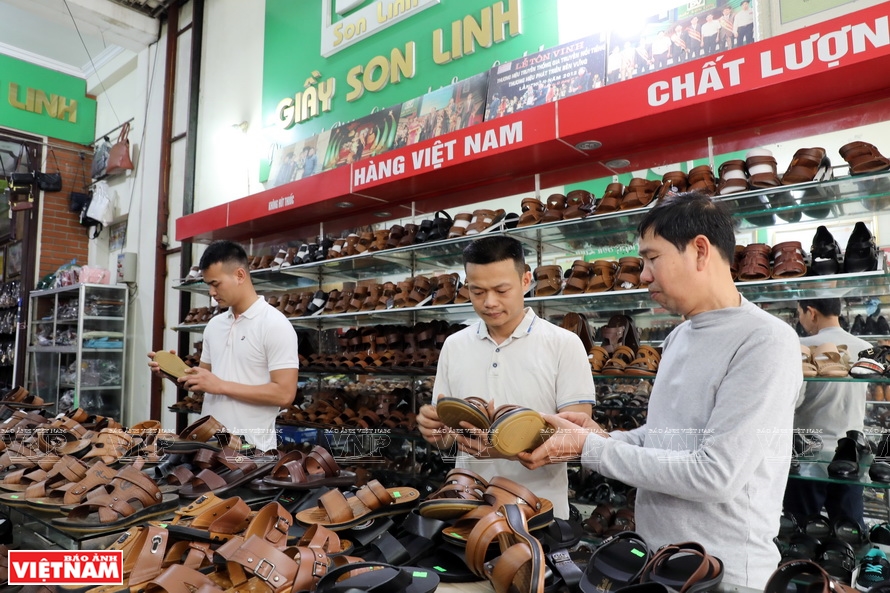 At a footwear shop in Phu Xuyen, Hanoi.
At a footwear shop in Phu Xuyen, Hanoi.
|
Hoan also said that there were over 100 workshops registered exclusively with the Intellectual Property Office of Vietnam. Besides existing export markets, Phu Yen village targets to new ones including India, Thailand, Malaysia and China. Hopefully, Phu Yen footwear products will be covered in Southeastern countries and other markets.
Story: Thao Vy Photos: Thanh Giang Translated by Nguyen Tuoi